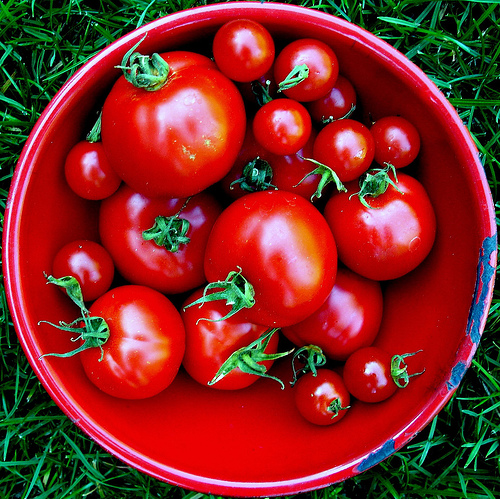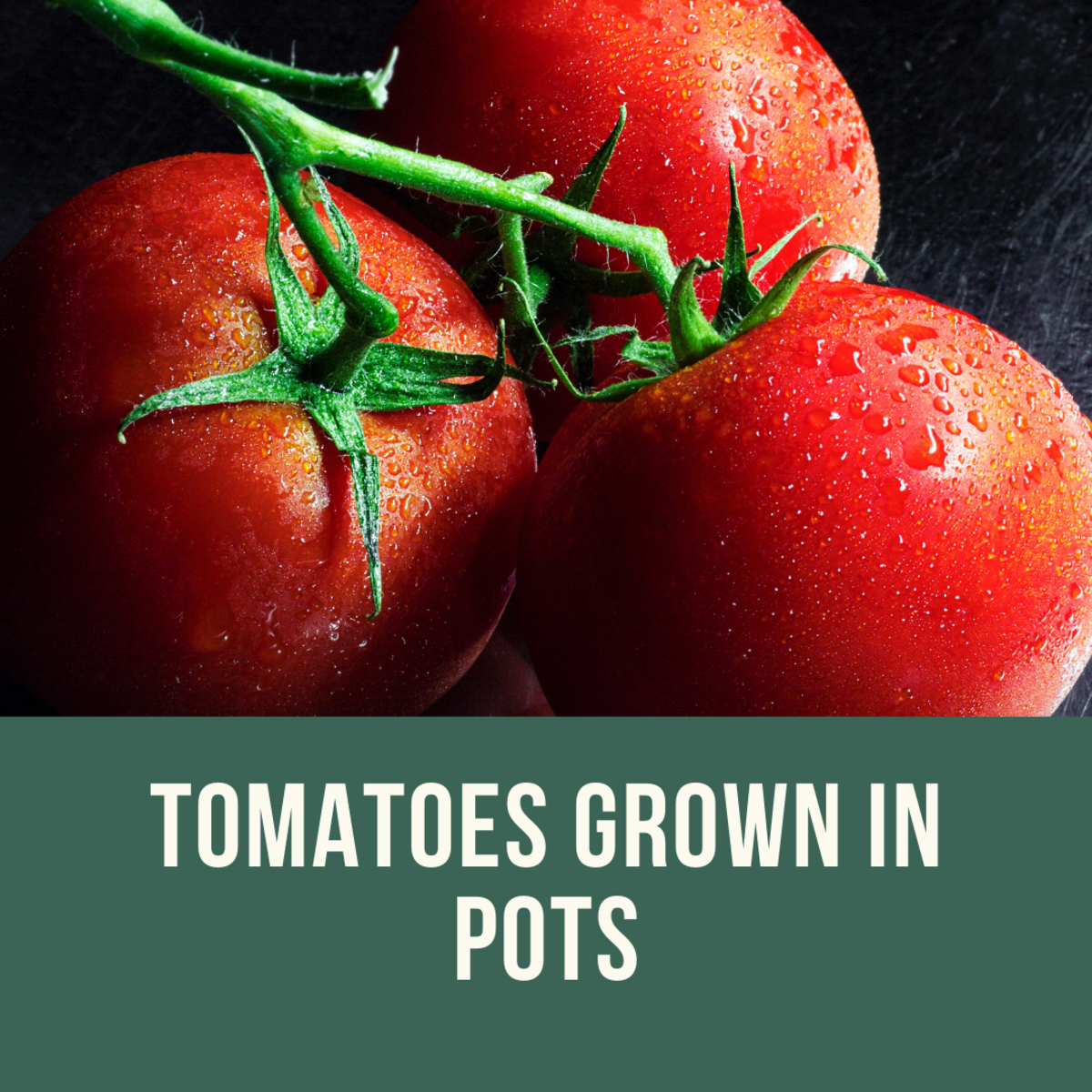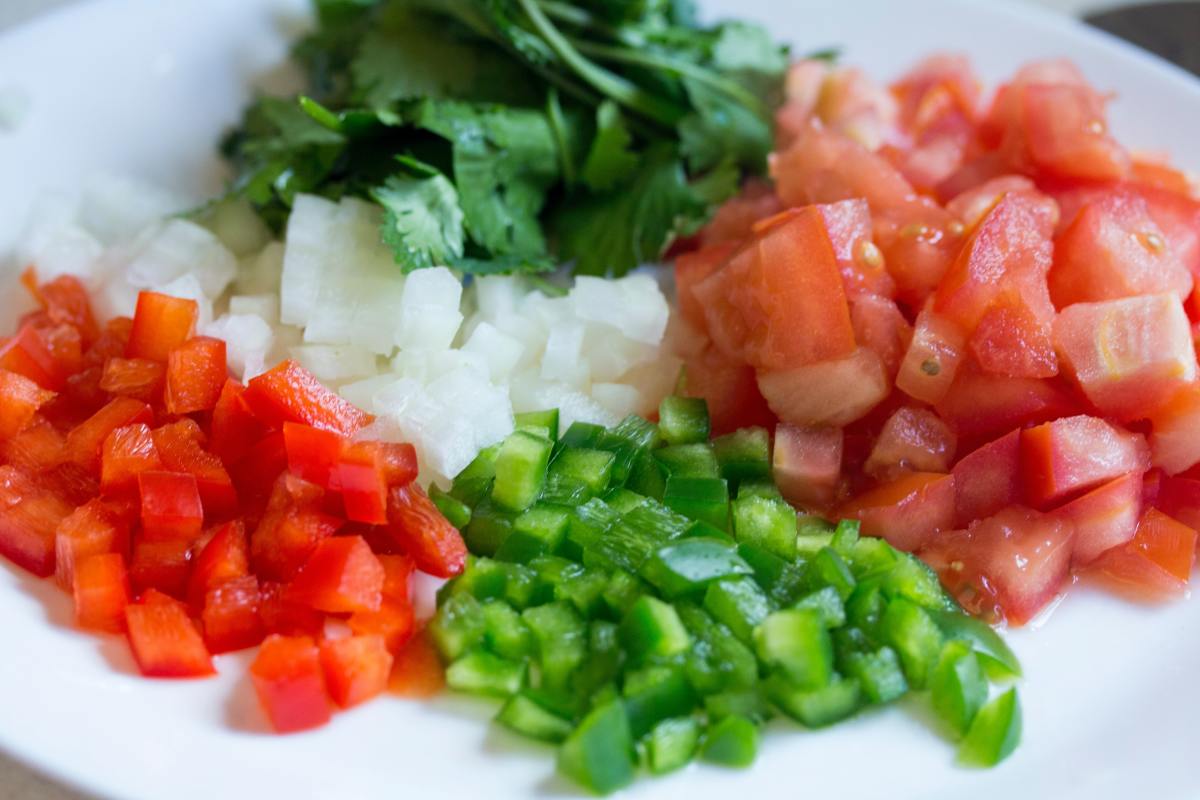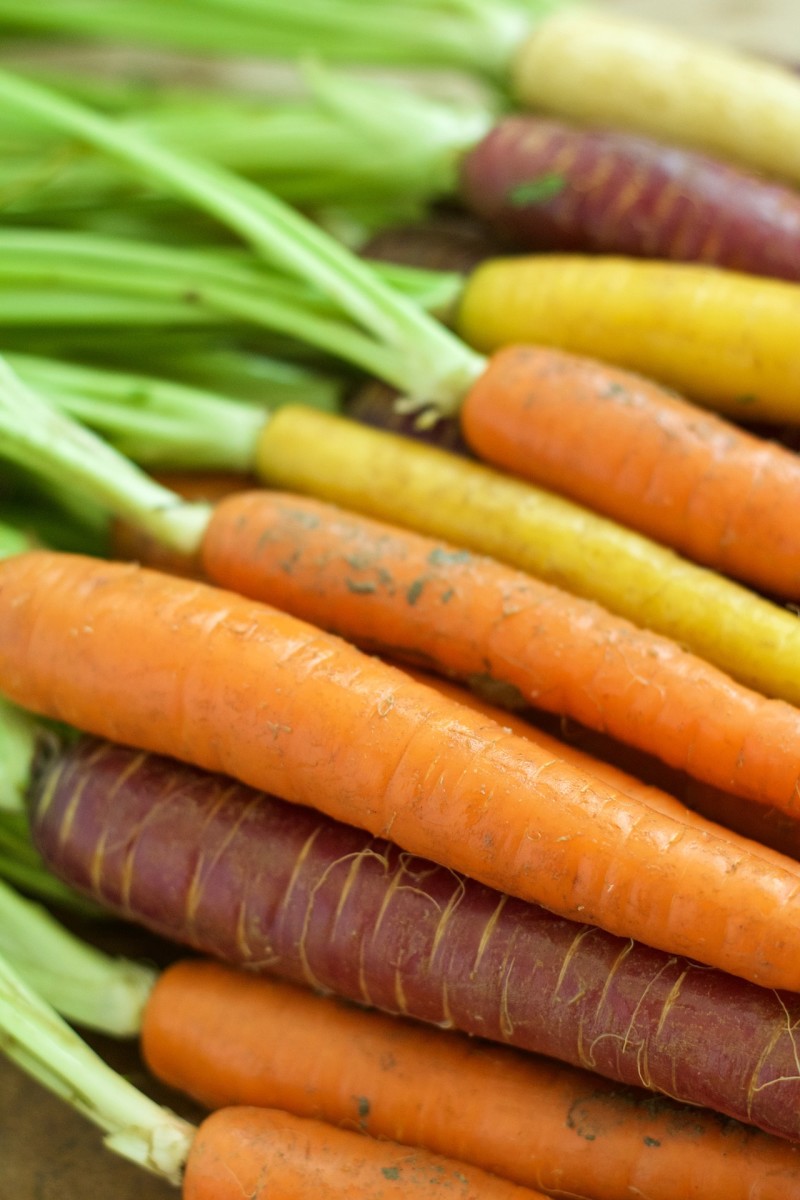Tomatoes 101 - Types, Uses, Choosing, Storage, and Preparation Tips

The Popular Tomato
Technically, tomatoes are fruits, but most people consider them and use them like vegetables. They are probably the most popular vegetable. Tomatoes are suitable for many cooking and eating purposes, and in virtually any kind of cuisine.
So what specific traits should a person consider when choosing various kinds of tomatoes for tasty recipes? Due to modern farming techniques and the many tomato varieties, tomatoes are available year round. Still the taste is far superior if eaten during their natural peak season. Read the following recommendations regarding selecting tomatoes, how to store tomatoes properly, and for cooking with tomatoes. Plus there are a few easy suggestions below for ways to use tomatoes.
Different Tomato Varieties
There are many, many tomato varieties. They are each suited for different purposes- eating in salads, added to entrees, or used in sauces. Here are some of the most common types of tomatoes and best uses for each of them:
Beefsteak tomatoes are the largest types of tomatoes. Most weigh at least two pounds. They can grow up to five inches in diameter. They don't have a lot of pulp. They make excellent slicing tomatoes. Beefsteak tomatoes are the premier tomato variety for eating raw. But beefsteak tomatoes are also excellent for including in cooked sauces as well. Simply stated, they are absolutely delicious, regardless of how you eat them.
Globe tomatoes, which can be either red or yellowish, are the most common type of tomatoes. These are the tomatoes you find most often in supermarkets. They're regarded as general purpose tomato plants, great for eating fresh as well as for use in cooking.
Roma tomatoes, often referred to as plum tomatoes, tend to be smaller than globe tomatoesand oval shaped. They are fleshier compared to globe tomatoes, and contain less pulp. Roma tomatoes are perfect for making homemade sauces and for canning.
Cherry tomatoes are the ideal bite size. They ae much sweeter than larger tomatoes. They are perfect for snacks, salads and to use as decorative, edible garnishes.
Teeny pear tomatoes resemble pears somwhat. They may be used similarly to cherry tomato plants. Cherry and pear tomatoes usually are reddish, however yellow-colored kinds are often readily available.
Buying Tomatoes
Try to find plump, hefty tomatoes which are colorful and possess a pleasing smell. They must be firm and not hard. Reject soft tomatoes. They could be watery or overripened.
Proper Storage of Tomatoes
Under no circumstances should you ever refrigerate whole tomatoes. Refrigeration can result in the flesh becoming grainy and losing quality and taste.
Rather, keep tomatoes stored at room temperature removed from direct sunshine. If they need to be ripened, put them in sunlight for a few days to ripen them more. They can be kept at room temperature for about 3 days.
Leftover sliced or diced tomatoes need to be covered and then refrigerated. Refrigerate if not used within a couple of hours.
Ways to Prepare Tomatoes - How to Slice Tomatoes, Etc.
How to slice a tomato: Wash to remove any dirt or pesticides. Dry gently. Take out the stem and core prior to slicing or chopping tomatoes. Use a serrated chef's knife, if possible.
Just before using tomatoes in sauces, you should peel them and remove the seeds. Tomato skins often wrinkle and get touch if cooked, and tomato seeds are generally unappealing in sauces.
How to peel tomatoes- Slightly cut an X into the tops and bottoms, just piercing the skin. Then lower fresh tomatoes directly into boiling water for about a minute. Some kinds may only need just a few seconds. Carefully remove them with a set of tongs. Next, submerge them straight into ice water. As soon as the tomatoes are chilled, slide off the skins.
How to seed tomatoes- Slice them in two. Positioning each half above a dish, cut part facing down, carefully press the tomato to expel the seeds. Or simply cut them in half and scoop out the seeds with a spoon.










